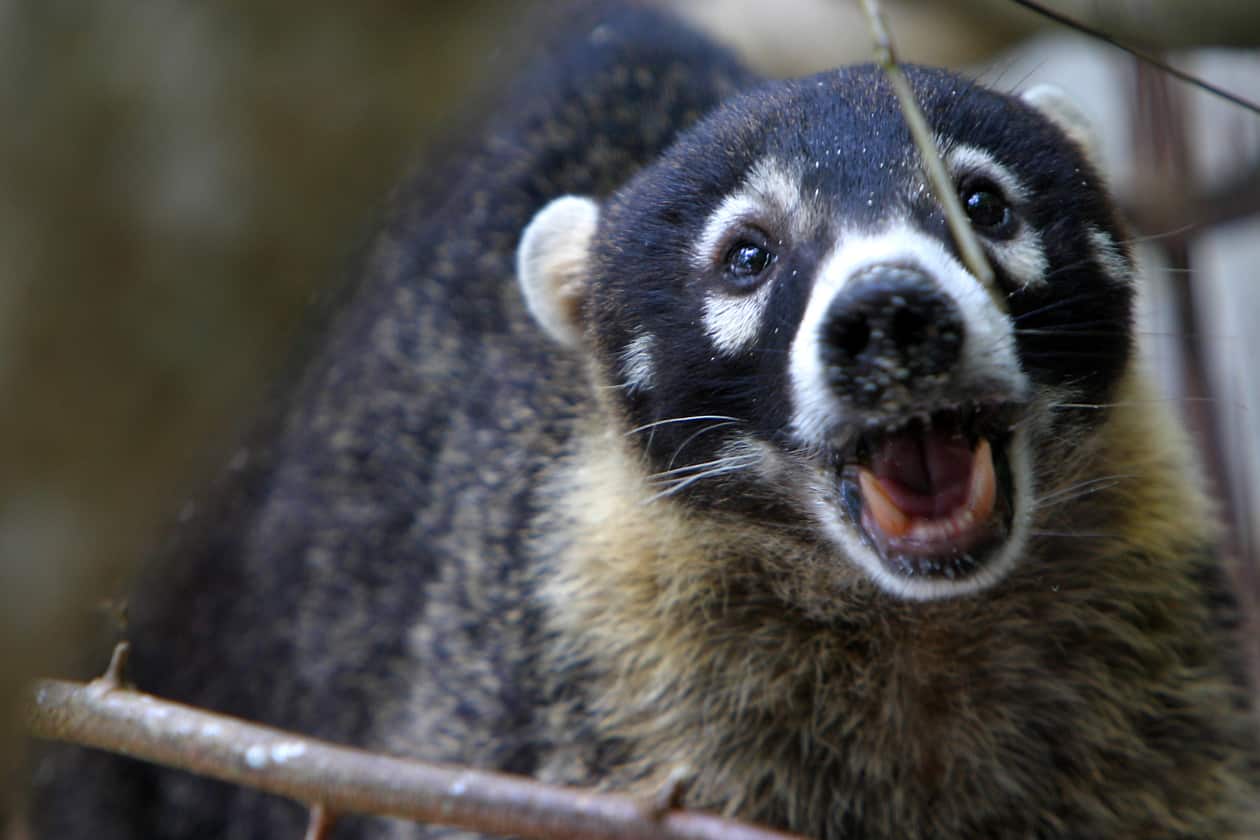They are coming for your food, for your pet’s food and for your garbage. With their cute little turned-up noses, bushy tails and adorable squeaking sounds, the coatis (Nasua narica) are coming in droves.
“It’s not exactly an overpopulation,” said Jorge Hernández, a wildlife expert with the National System of Conservation Areas (SINAC). “But we are seeing unprecedented numbers in urban areas. It’s starting to cause some problems.”
Migrating down from the mountains, coatis, or pizotes as they are called in Costa Rica, have made their way into the urban landscapes of the country’s Central Valley. Once welcomed by residents and tourists in the area, the cute creatures are now causing problems for business owners and flooding SINAC offices with complaints.
“At first people think they’re cute and try to keep them around,” said Ronald Mora, head of SINAC’s Heredia office. “When they start to become a problem is when they call us.”
While developing a new management plan to deal with the pizote explosion, SINAC has identified 27 problem areas where populations have become aggressive. The hot spots, mostly in Heredia and Escazú, tend to be in river canyons, which pizotes use to guide their migrations.
But according to SINAC, its not the pizotes’ fault.
“This is an entirely human-caused problem,” Hernández said. “People do not dispose of their trash properly, or worse, they feed the pizotes.”
According to Hernández, feeding has brought on the vast majority of the Central Valley’s pizote problems. A coati that has been repeatedly fed will start to associate humans with food, and over time will become aggressive towards people who do not feed them. Feeding wild animals has been banned in Costa Rica since April of 2013, but SINAC officials still struggle to enforce this regulation.
The homes and businesses that failed to heed the law are now paying the price. Coatis have begun busting into homes in search for food and invading trash bins. Business owners near the toll booths in Escazú began feeding pizotes to attract tourists, and now the area is overrun with at least 86 of the fluffy creatures.
This human mismanagement is now flooding SINAC with coati complaints, and forcing the organization to consider drastic measures. The law permits relocation and castration in extreme cases, but wildlife experts hope that education will help to avoid these measures.
Earlier this month, SINAC held a workshop in Heredia to teach students and biologists about proper coati interactions, and a group of students at the University of Costa Rica has begun designing pizote-proof trash bins for problem areas.
“But in the meantime,” Mora warns, “don’t feed the coatis.”






